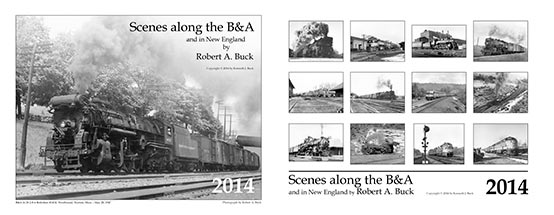(SOURCE: official release)
Amherst, Mass. - The
Amherst Railway Society has awarded more than
$40,000 in
grants to 19 charitable organizations that work to preserve rail heritage.
The
awards were made
at the society's annual Railroad Hobby Show Jan. 25, 2014 at
the
Eastern State's
Exposition in West
Springfield, Mass.
The two-day
show, one of the largest in the nation, attracts
about
25,000 railroad
enthusiasts each year. It is also the society's primary
fundraising
endeavor and
generates the money the society then distributes to rail-related
museums,
historical
societies and restoration groups.
Since 1991, the
non-profit Amherst Railway Society has given away about $750,000
in
grants.
"We're delighted
to be able to share the proceeds of our annual train show with
these
terrific
organizations that work so hard to preserve rail history," said John Sacerdote, the
Show
Director.
"Preservation of
important rail sites and equipment is extremely difficult, even
before
one considers
all the fundraising these groups do," added Amherst Railway
Society
President Sudro
Brown. "We're glad to be able to lend a hand to so many
organizations
doing such
worthwhile work. We plan to keep doing it in the coming
years."
The Amherst
Railway Society's $10,000 Founders' Award went to the Shelburne Falls
Trolley Museum in Shelburne Falls, Mass. The museum is raising money to build a
fireresistant metal two-car
car barn to house part of its collection.
The Robert A.
Buck Award, totaling $2,000 and named in honor of the long-time
director
of the Railroad
Hobby Show, went to the Chester Foundation in Chester, Mass.
for
restoration of a
1919 wooden caboose displayed at the Chester Depot.
The President's
Award, totaling $3,125, went to Branford Electric
Railway
Association/Shoreline
Trolley Museum in East
Haven, Conn. for
restoration of
Connecticut
Company Car No. 865.
The other grant
recipients are:
The ALCO
Historical & Technical Society of Schenectady, N.Y., $1,000 to help
cover
the cost of
moving Adirondack RSC2 No. 25 to a new location for eventual
display.
Bartlett
Roundhouse Preservation Club of Bartlett, N.H., $1,000 for
continuing
restoration of
the Conway Scenic Railroad's 1923 Russell snow
plow.
Central Vermont
Railway Historical Society of Randolph
Center, Vt.,
$2,500 to aid in
archiving CV historical information.
Conrail
Historical Society of Marysville, Pa., $1,500 for the purchase of a
portable
generator for
outdoor restoration work.
Friends of the
Keystone Arches, Inc., of Huntington, Mass., $1,500 to lift stones
from
the
Westfield River to restore one of the Keystone Arches in
Chester, Mass.
Hopewell Depot
Restoration Corp. of Hopewell Junction, N.Y., $1,500 for
construction
of a replica of
the 1892 control tower.
New
England Electric Railway Historical
Society/Seashore Trolley Museum
of
Kennebunkport, Maine, $3,000
toward restoration of Bay State Railway car No.
4175.
National Railway
Historical Society - Cape Cod Chapter, $1,500 toward
interior
restoration work
at the West Barnstable,
Mass. train
station.
National Railway
Historical Society - Lackawanna & Wyoming Valley Chapter
of
Scranton, Pa., $3,200
toward continuing restoration of Boston & Maine
steam
locomotive No.
3713.
National Railway
Historical Society - Western Connecticut Chapter of South
Norwalk,
Conn., $1,500 for exterior restoration
work to SoNo
Tower.
Old Colony &
Newport Railway/The National Railroad Foundation and Museum
of
Newport, R.I., $1,450
toward window replacement on the railway's 1884 office car
No.
74.
Rowe Historical
Society of Rowe, Mass., $1,232 for the purchase of a display
case.
Rutland Railroad
Museum of Rutland, Vt., $2,000 to upgrade interior
lighting.
Wiscasset,
Waterville and Farmington Valley Railway Museum of Alna, Maine, $2,600
for interior
enhancements to the Percival house.








